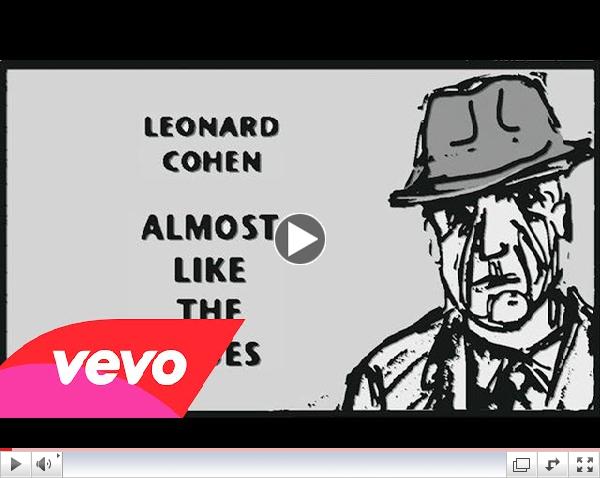 | |
Leonard Cohen - 'Almost Like the Blues' from Upcoming Album
|
|

New CCDS Book Reporting on Vietnam
|
 The new annual edition of our journal of discussion and analysis is now out. More than 170 pages, it includes 14 articles on strategy austerity, organizing, and the right. Cost is $10 plus shipping. Or get one by becoming a sustainer. Click the title to buy it directly. The new annual edition of our journal of discussion and analysis is now out. More than 170 pages, it includes 14 articles on strategy austerity, organizing, and the right. Cost is $10 plus shipping. Or get one by becoming a sustainer. Click the title to buy it directly.
|
|
Radical Jesus:
A Graphic History of Faith 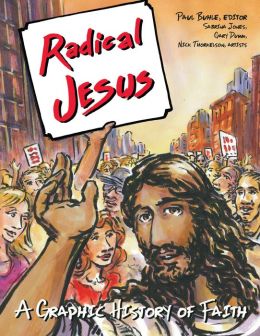 By Paul BuhleHerald Press By Paul BuhleHerald Press
|

Want to Know what CCDS has
been doing...Check it Out!
|
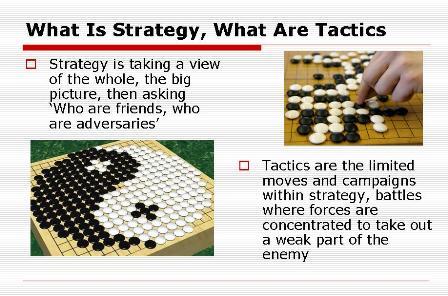 Keep On Keepin' On Keep On Keepin' OnHating the 'Middle Class,' Why Socialists Run in Elections, Strategy and Tactics Slide Slow, Class and Privilege, the Green New Deal ...and other Short Posts on Tumblr by Carl Davidson
|

Edited by Carl Davidson Revolutionary Youth and the New Working Class: The Praxis Papers, the Port Authority Statement, the RYM Documents and other Lost Writings of SDS Changemaker, 273pp, $22.50
For the full contents, click the link and view 'Preview' under the cover graphic.
|
|
By Randy Shannon, CCDS

"Everyone has the right to work, to free of employment, to just and favorable conditions of work and to protection against unemployment."
- United Nations Universal Declaration of Human Rights, December 10, 1948
I. Introduction
The "Great Recession" that began in 2007 has caused the greatest percent of job losses since the Great Depression of 1929. This crisis is the end of an era of unrestrained 'neo-liberal' capitalism that became public policy during the Reagan administration. The crisis marks a new level of instability with the growth of a global financial elite that targeted US workers and our trade unions after World War II.
|
|
Order Our
Full Employment Booklets
 |
...In a new and updated 2nd Edition
Capitalism may well collapse under its own excesses, but what would one propose to replace it? Margaret Thatcher's mantra was TINA...There Is No Alternative. David Schweickart's vision of "Economic Democracy" proposes a serious alternative. Even more fundamentally, it opens the door to thinking about alternatives. His may or may not turn out to be the definitive "successor system," but he is a leader in breaking out of the box. |
 by Paul KrehbielAutumn Leaf Press, $25.64
by Paul KrehbielAutumn Leaf Press, $25.64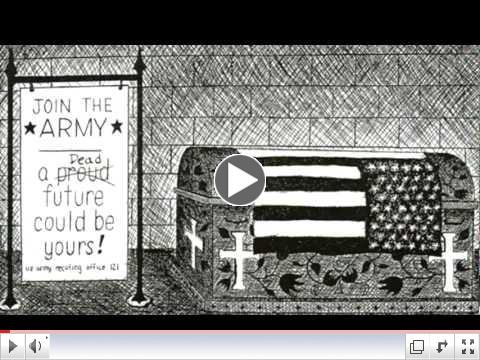 | | Shades of Justice Video: Bringing Down a President, Ending a War |
|
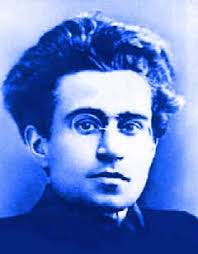 By Giuseppe Fiori
Verso, 30 pages
|

Essays on Mondragon, Marx, Gramsci
and the Green and Solidarity Economies |
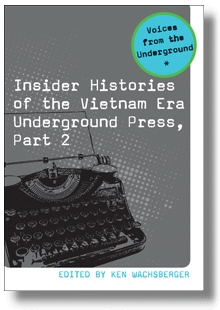
- Foreword by Susan Brownmiller
- Preface by Ken Wachsberger
$37.50 + $6 shipping
|
|
Discussion Documents for a Militant Movement
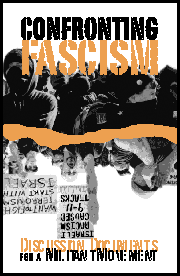
By Don Hamerquist
|
|
|
|
An Invitation to CCDSers and Friends...
 Ferguson Ferguson
Insurgency
Spotlights
All the
Fault Lines
We're the Committees of Correspondence for Democracy and Socialism...Do you have friends who should see this? Pass it on...Do you have a blog of your own? Others you love to read every day? Well, this is a place where you can share access to them with the rest of your comrades. Just pick your greatest hits for the week and send them to us at carld717@gmail.com! Most of all, it's urgent that you oppose militarized police, the war on Gaza, defend voter rights, plan for 2014 races now, oppose austerity, support the 'Moral Mondays' in North Carolina, the fight for the Green New Deal, a just immigration policy and the Congressional Progressive Caucus' 'Back to Work Budget'! We're doing more than ever, and have big plans. So pay your dues, make a donation and become a sustainer. Do it Now! Check the link at the bottom... |
Ferguson Violence Exposes USA's Political Decay

By Thomas Adams The Age (Sydney, Australia) via Portside
Aug 20, 2013 - For anyone with a consciousness of American history, the events of the last week and a half in Ferguson, Missouri, a predominately African-American suburb outside of St. Louis, should seem all too familiar. A police officer murders an unarmed black man. As days go by and more information on the shooting is released, residents take to the streets to protest. Their protests are met with force utterly disproportionate to a free society. In response, the protests turn sporadically violent themselves, producing and even more violent response on the part of authorities.
Harlem, 1943; Philadelphia and Rochester, 1964; Watts (Los Angeles), 1965; Newark, 1967; Camden, 1971; Tampa, 1987 and 1989; Washington, D.C., 1991; Los Angeles, 1992; Cincinnati, 2001; Benton Harbor (Southwest Michigan), 2003; Brooklyn, 2013 - all these incidents, and many others, contain the basic contours of the situation in Ferguson.
By now many in the United States and across the world have weighed in on the underlying causes of the escalating violence in Ferguson. Analysts have rightly pointed out the massive build-up in American police militarisation, the depths of poverty that are endemic to many American neighbourhoods, a broad culture that equates young African-American men with criminality, a failed war on drugs that has led to the incarceration of generations of the American poor and the corresponding transformation of much of urban America into a police state.
Those who probe deeper look to the end of basic rights to housing, the lack of economic opportunity resulting from deindustrialisation, the corollary unwillingness of American society to envision contemporary employment opportunities as viable avenues into the middle class, education policy that stubbornly refuses to give poor communities the resources to produce better schools, and predatory lending that preys on poor Americans. The conflicts in Ferguson are symptoms of a larger problem of American racial and economic inequality. Militarised police committing a horrible injustice become the easy and immediate symbol of the multiple oppressions that characterise neighbourhoods and communities across the country.
Such accounts are absolutely correct. They are not though, the entirety of the story. The sheer length of the list above points to a deeper problem in American life - the utter decimation of a politics capable of changing the immediate and underlying facts that led to the tragic murder of Michael Brown.
The basic outlines of this political atrophy are already apparent. President Obama has urged Americans to "comfort each other and talk with each other in a way that heals". He has suggested that Americans are "going to move forward together - by trying to unite each other and understand each other". In the coming days there will be similar calls from people across the political spectrum,ranging from civil rights leaders to tea partiers. President Obama will direct the Justice Department to investigate the shooting and its aftermath. Perhaps he or Missouri Governor Jay Nixon will even form a blue-ribbon commission to study the underlying causes of the shooting, as was done in the aftermath of many 1960s-era uprisings. ...(Click title for more)
|
|
By DeNeen L. Brown
Progressive America Rising via Washington Post
Aug, 21m 2014 - FERGUSON, Mo. - It hasn't been so easy for traditional civil-rights-era activists in this small St. Louis suburb in recent weeks, where the fatal shooting of unarmed black teenager Michael Brown by a white police officer has put them on all-too-familiar turf: challenging the treatment of African American men by police.
They, like so many around the country - including President Obama and Attorney General Eric H. Holder Jr. - have been deeply concerned about the militarized police response with tanks and tear gas and scores of arrests.
But what also has affected these activists is the realization that there is a generational divide between them and young protesters, who are organizing on their own. They are fueled by rage, mobilized by social media and sometimes, or so it seems to the old guard, capable of a bit of disrespect.
"The difference is, in the '60s, we were disciplined," Ron Gregory, 72, told a crowd gathered at a historic church on Martin Luther King Drive in St. Louis to discuss protest strategies. The city is just minutes away from Ferguson.
"We were trained when we marched. We were taught if they spit on you, just wipe it off and continue marching. But we are dealing with a new breed of youngster. They say, 'You better not spit on me.' "
The killing of Michael Brown, an unarmed black teenager, by a white police officer has pushed a St. Louis suburb past the breaking point.
Generational divides are not new. Even John Lewis and the Student Nonviolent Coordinating Committee challenged leaders such as the Rev. Martin Luther King Jr. and the Southern Christian Leadership Conference because they believed they weren't pushing hard enough, fast enough. Later, the Black Panther Party took up arms and argued that African Americans have a right to defend themselves. ...(Click title for more)
|
|
Statement of the Committees of
Correspondence for Democracy and Socialism
August 19, 2014
In a ten day non-stop protest, the people of Ferguson, MO - youth and seniors, Black and white - are standing up for justice, equality and democracy in protest of the police murder of young Michael Brown, a black teenage resident of the majority African American suburb of St. Louis. The people of Ferguson are joined by people around the country who have participated in vigils and street protests of the police cover up and the brutal police repression against peaceful protesters that have followed.
The daily peaceful protests are not only justified, but likely to continue and spread unless radical changes are made. Calling for 'calm' and peace' when injustice is prevailing and rampant doesn't help much and at worse, is divisive. Broad unity is needed, one that includes angry young people as well as their elders.
Michael Brown is only the latest person of color, mainly African American, to be murdered by police in cities around the country and with impunity. Ten days after Brown's murder, no charges have been brought against the police officer whose identify was kept secret for over a week.
As Michael Brown lay dead in Ferguson, MO, organizing for a march in NYC had been underway since the police murder of Eric Gardner last month. His so-called "crime" was selling cigarettes on a street corner. Like Brown's death, Gardner's killing by police has catapulted community, civil rights organizations, youth groups and unions to join together for a march across the Verazzano Bridge on August 23rd demanding the police involved be held to account.
The rampant police murders and other crimes against Black and Brown people represents a state of national emergency.
CCDS urges all to sign the online petition sponsored by Color of Change and Democracy for America that calls on President Obama to send federal marshals to Ferguson, not the National Guard, "to protect Ferguson residents from an out of control and extremely violent police force."
http://act.colorofchange.org/sign/mikebrownpresobama/?source=DFA2
Beyond this, a political agenda to stop police murder and other crimes should include:
1. Establishing Civilian Police Accountability Councils (CPAC), a campaign spearheaded by the Chicago Alliance Against Racist and Political Repression. Only civilian control of police departments can reign in police and hold them accountable for their crimes.
2. Demilitarization of police departments. CCDS joins with the CPUSA and others who call for repeal of the National Defense Authorization Act which has provided local police departments from the largest to the smallest with Pentagon weaponry and paramilitary training. Missouri law enforcement agencies have received $69 million in military weapons. Nationally, more than $4.3 billion in military equipment has gone to police agencies since 1997.
3.The immediate arrest and indictment against the officer responsible for Michael Brown's death. As St. Louis writer and activist Jamala Rogers wrote, Black people must have equal protection under the law and those who use the badge to abuse their authority must be held accountable. "Above all, they want transparency," said Rogers.
4. An end to police "racial profiling," the practice of racist targeting of Black and Latino people, and an end to "stop and frisk" policies which are nothing more than targeted harassment of mainly Black and Latino youth.
5. Affirmative action for police departments. Programs must be implemented immediately to insure that police forces are representative of the people they serve.
6. An urban agenda for the nation. In the midst of the Ferguson protests, the Rev. Jesse Jackson of Rainbow/PUSH has drawn attention to the pressing need for a new urban agenda for our nation's cities. We agree. Like other industrial states and central cities deserted by capital's low-wage, anti-union drive, Missouri has a 22% unemployment rate. Joblessness for Black and Latino youth is twice the rate of white youth whose futures are also in jeopardy. Needed is a political agenda for rebuilding our cities - a just transition to a new economy, one that is good for the environment, good for the country, good for a peaceful foreign policy, and good for young people who are desperate for a future with living wage, full time skilled jobs and training.
Committees of Correspondence for Democracy and Socialism
www.cc-ds.org
national@cc-ds.org
|

Will the UAW's latest experiment
in Chattanooga pan out?
By Moshe Z. Marvit
In These Times
When the workers at the Volkswagen plant in Chattanooga, Tennessee, voted in February on whether to unionize, the stakes were high. A victory would create a foothold for labor in the elusive South, while a defeat could be interpreted as a sign of the labor movement's inexorable decline.
The vote went against the union-712 to 626-and labor was left to figure out its next move. Under U.S. labor law, another vote cannot be held for a year.
On July 10, the United Auto Workers (UAW) announced they were establishing a new local at Volkswagen Chattanooga. Local 42 is a members-only (or "minority") union-a model used rarely in the United States. Unlike a traditional American union, in which a majority of workers vote for a union that will represent the entire work-force, a members-only union is voluntary and represents only workers who choose to join.
While a company has no legal obligation to negotiate with a members-only union, the UAW has announced a "consensus" with Volkswagen in which the company will recognize Local 42 once it has signed up a "meaningful portion" of the workers. If Local 42 can enlist a majority, VW may choose to recognize the union as the exclusive bargaining representative of the entire workforce, without another NLRB election.
With this experiment, Chattanooga may again become a harbinger of labor's future.
Members-only unionism may represent a new way for workers to organize, especially in so-called right-to-work states, where it could solve the "free rider" problem: Though workers in right-to-work states can opt out of paying union dues, the union must still represent them. However, a members-only union represents only those who join.
To succeed, the local will need to work outside many of the protections of labor law, which will require unusual agility and creativity. To discuss the potential of minority unionism, In These Times talked with former UAW President Bob King, who retired in June, Catherine Fisk, a law professor at the University of California-Irvine and an expert on minority unionism, and Matthew Finkin, a professor of labor law at the University of Illinois School of Law.
Bob, tell us about the UAW's minority union at VW Chattanooga.
Bob: We've chosen to call it a members' union to really stress that it is about the workers in Chattanooga. They're taking a lot of responsibility for the forming of their local.
Matthew: What does this local actually do? It doesn't bargain for enforceable agreements with VW, does it?
Bob: That's unknown at this point. We think that VW will address issues with us. Workers in Chattanooga have brought up a lot of shop-floor concerns. As we address these issues, I expect we will be able to sign up a majority of workers and bargain a full agreement....(Click title for more)
|
John Oliver Skewers the Militarization of Police
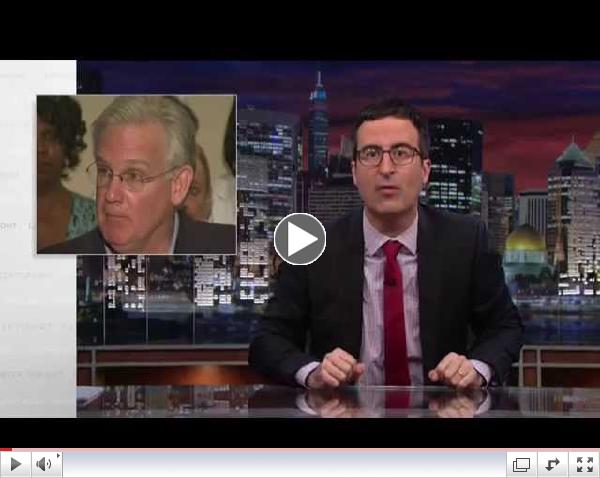 | |
Last Week Tonight with John Oliver: Ferguson, MO and Police Militarization (HBO)
|
|
Why US Airstrikes Won't Defeat ISIS

Click Phote for Interview Video
By Jaisal Noor The Real News Network | Video Interview
Aug 12, 2016 - TRANSCRIPT:
JAISAL NOOR, TRNN PRODUCER: Welcome to The Real News Network. I'm Jaisal Noor in Baltimore. Welcome to this latest edition of The Prashad Report.
We're now joined by Vijay Prashad. He's joining us from Northampton, Massachusetts. His most recent book is The Poorer Nations: A Possible History of the Global South.
Thank you so much for joining us again, Vijay.
VIJAY PRASHAD, PROF. INTERNATIONAL STUDIES, TRINITY COLLEGE: Thanks, Jaisal.
NOOR: So we know you've been closely following the ongoing political turmoil in Iraq. Can you give us an update about the latest of what's happened there?
PRASHAD: Well, there are a series of problems happening in Iraq. One of them has been a longstanding political problem in Baghdad over the government and government formation. The second one is a much more dramatic event, and that is the emergence of the Islamic State is a full-blown insurgency in northern Iraq.
This morning, on August 11, there was a great deal of drama in Baghdad when tanks appeared in the streets of the capital, surrounded the Green Zone, surrounded the residence of the president. And what it appeared was going on was that the prime minister, Mr.Mr.. Nouri al-Maliki, was in some senses putting a coup forward against the constitutional process, because he is under threat of removal as the prime minister of Iraq. By about midday, it was clear that the coup attempt had fizzled--if there ever was a coup attempt.
And once more we're back to the problem of a major constitutional crisis, because Mr.. Maliki party, which is ruling in coalition, simply doesn't have enough seats in the legislature to continue by itself. So the president has put forward an alternative candidate for prime minister also from Mr.. Maliki's party. This is why it's extremely complicated how the Dawa Party, which is Maliki's party, but also the party of Mr. Haider Al-Abadi, how this party, the Dawa, is internally divided. It has to--with only 92 seats out of 328, it has to reach out to other parties.
So there is this constitutional mess that's in Baghdad. You'd think that Baghdad, threatened with all-out war against it from the Islamic State, the political class would unite very quickly and prevent this kind of side-drama when something much more dangerous and much bigger is occurring along the Tigris River.
NOOR: And I wanted to just thank our viewers for sticking with us. We're having some slight technical difficulties with the connection, but I know our wonderful studio crew is busy at work trying to resolve that. But about what you just alluded to, Vijay, your latest piece in The Hindu, it's titled "Metastasis of the Islamic State". And in it you write:
Jordan, Qatar, Saudi Arabia and Turkey, the anti-Assad powers, refuse to join a united front with Iran, Iraq and Syria to tackle the IS threat. With absent coordination, the Islamic State will continue to thrive.
Tell us exactly what the threat is and what it means that the regional powers refuse to be united on this front. In your piece, you talk about how the Islamic State has made advances into Lebanon, which have at least been temporarily thwarted. But it continues to expand in Iraq, continues to enjoy a powerful presence in Syria. Now President Obama has said he's going to step up attacks on it with possible airstrikes, possible direct funding to the Kurds. Tell us exactly the latest, and also if the U.S. support for the Kurds and other airstrikes will do anything without a regional solution.
PRASHAD: Well, the Islamic state is the child of al-Qaeda of Iraq or al-Qaeda of Mesopotamia, which was created in 2004 in reaction to the American invasion of Iraq and the American destruction of the Iraqi state. So it's in that moment of chaos in Iraq that al-Qaeda of Mesopotamia was born. It was born with foreign fighters. It drew on an enormous amount of anger against the Americans; therefore it increased its support base. And this is its child. I mean, it was then reconstituted as the Islamic State of Iraq. Then it became the Islamic State of Greater Syria and Iraq. And now it's simply the Islamic State.
But it will not be destroyed by aerial bombardment. I think that's the first point to make is that the United States, when tackling this group and groups that its allied with, for instance, the Naqshbandi Army, etc., the United States has already been at war with these organizations during the battle of Falluja, in the battles in Ramadi, in the battles of Tal Afar. I mean, U.S. Marines have been fighting them over the last decade before they left Iraq. So it's very unlikely that from 30,000 feet the Americans are going to be able to cower this very sophisticated and incredibly brave fighting outfit. So this idea that U.S. involvement is somehow going to change the tide of the Islamic State's progress seems to me a little illusionary....(Click title for more)
|

Voter registration table at Ferguson protest site has Missouri's GOP 'furious.'
By Sam Wang
The New Yorker
Political junkies like to talk about "wave" elections, in which one party makes massive gains and overturns the existing power dynamic.
National Journal reports that the odds of such a wave election, in favor of Republicans, are increasing for the upcoming 2014 elections.
The chairman of the National Republican Congressional Committee, which funds House races, is even more confident. Is this just a case of political operatives engaging in trash talk? By looking at polling trends in the upcoming House and Senate elections, we can start to gauge how big the Republican gains might be.
THE HOUSE
In 2010, in the wake of a bitter legislative battle over the Affordable Care Act, Republicans gained sixty-three seats in the House and took control of the chamber. That year, public opinion looked like this:

This chart shows an average across many polls of House ballot preference, which is defined using the "generic Congressional ballot" question: Will you vote for a Democrat or a Republican this November? The vertical axis shows how many more respondents preferred Democrats (D) over Republicans (R), or vice versa.
In the closing weeks of a campaign, the generic ballot question does a good job of predicting how national elections will turn out. Along the way, it can give a glimpse into how public opinion shifts. The yellow zone runs from January 1st until mid-August. There are two lessons here: First, a preference for ousting the Democratic majority was apparent throughout nearly all of 2010.
Second, opinion shifted further toward Republicans in August-right about where we are now in the current campaign cycle. The vertical range of the yellow zone shows a confidence interval, where the poll average was for ninety-five per cent of the time-in this case, between D+0.4% and R+6.0%. In mid-August, voter opinion moved out of the yellow zone and headed toward the actual election outcome, a Republican popular-vote win by 6.8 per cent. These results show that a wave can indeed be discerned in advance. If 2010 and other past elections are any indication, we should be nearly at the point where we can see a hint of the November outcome. But, as it turns out, this year's polls look a little different:

The biggest difference from 2010 is that, for much of the past twelve months, voters have preferred Democrats by a slim margin....(Click title for more)
|
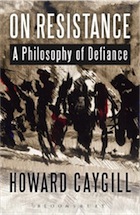 On Resistance: On Resistance:
A Philosophy of Defiance
By Howard Caygill
Bloomsbury Academic
London and New York
2013. 264pp., £20 hb
Reviewed by Tom Bunyard
Tom Bunyard works at the University of Brighton and at Goldsmiths College, University of London. He is currently writing a book on the theoretical work of Guy Debord and the Situationist International.
As its subtitle indicates, Howard Caygill's On Resistance is an attempt to develop a 'philosophy of defiance': a project that the book pursues through a set of critical reflections on a wide range of writers, philosophers and movements associated with political resistance.
This is an extraordinarily rich book, and Caygill's selection of struggles and authors is both eclectic and erudite. In keeping with its focus on resistance and conflict, many of the book's discussions involve placing its subject matter in confrontational relations: Clausewitz is read through Kant; Freud is set against Lenin and Lukács; Greenham Common is placed in relation to the Black Panthers and the Zapatistas, and so on.
A genuine host of names and events are treated in this manner, and serve as sources for novel, and occasionally surprising interpretations. These readings are admirably lucid, but the book's overall presentation of its 'philosophy of defiance' can become somewhat buried within them; there is however a sense in which this stems from the manner in which Caygill sets out to address the topic of resistance.
Resistance, for Caygill, stands in contrast to resolution and unification, insofar as resolution is taken to entail the end of opposition. Many of the book's discussions thus serve to develop ideas that imply the preservation of resistance, or advocate treating resistance as 'an end in itself' (186) (as opposed to a means towards an end that might, once achieved, render such resistance redundant). This concern with the closure afforded by resolution extends to conceptual unification and synthesis, and thus obliges the form of the book to conform to its content to some degree: A philosophy of resistance', as Caygill puts it at the outset, must 'resist the pressure of concept formation', and thereby avoid reducing resistance to a 'single concept amenable to legitimation and appropriation' (6). Rather than simply describing his overall position, Caygill thus allows it to emerge through a series of interacting discussions.
This entails that the book can feel, at times, as though it is reaching towards an ideal of resistance that resists its own final conceptualisation, and which the book can only refract through its various readings. More accurately, however, this strategy is an attempt to address resistance per se: to consider it shorn of presuppositions, and thus of the concepts of freedom, revolution and emancipation to which it is often rendered subservient (97). Perhaps surprisingly, the result is a politicised subjectivity that seems akin to a stoic virtue-ethics: a position that is attractive in some respects, but which, as will be suggested below, also seems to invite recourse to the themes of freedom and revolution from which this project initially departs.
The book employs three different strategies. The first is a 'critique of resistance', which sets out the primary 'frames' for thinking resistance (albeit a critique that avoids 'exhausting [resistance's] capacity' to resist its own schematisation) (9-10). This informs the first three chapters' discussions of issues concerning consciousness, violence and subjectivity. Caygill's second strategy is to look at the history of political resistance; the third considers the 'valencies' (10) of resistance, i.e. its relation to the concepts of freedom, revolution and repression, etc., with which it is often associated....(Click title for more)
|

The Two Legends Are Hosting a Nebraska Farm Concert to Protest Pipeline
By Daniel Kreps
Rolling Stone
August 19, 2014 - After spending decades spearheading Farm Aid, Neil Young and Willie Nelson will once again team up for a benefit concert protesting a proposed Keystone XL pipeline that would cut through the historic Ponca Trail of Tears in Nebraska. On September 27th, the two Rock and Roll Hall of Famers will stage their "Harvest the Hope" concert at a farm outside Neligh, Nebraska, with all proceeds from the show going to Bold Nebraska, the Indigenous Environmental Network and the Cowboy and Indian Alliance. $50 tickets for the Harvest the Hope concert go on sale Wednesday, August 20th at Bold Nebraska's official site.
In addition to the imposition the proposed pipeline would have on tribal land, farm owners in the area are also concerned about the environmental footprint if energy company TransCanada's Keystone XL pipeline is approved, from contaminating groundwater to pollution. A handful of farmers along the pipeline's planned route have refused to sell their land to TransCanada, including Art and Helen Tanderup, whose Neligh, Nebraska farm will host the 10,000 attendees.
"Farmers, ranchers and tribes that have been standing up to TransCanada are rock stars in my eyes," Bold Nebraska director Jane Kleeb said in a statement. "Now we will have the honor to have music legends Neil Young and Willie Nelson stand with us against this risky pipeline that threatens our water and our livelihoods. It is our hope that President Obama in the end stands with us over Big Oil." Because the proposed pipeline also would cross international borders, President Obama would have to sign off on the project, Omaha.com reports.
Young has long been one of rock's most environmentally conscious rockers - the front page of his website currently features an essay on organic cotton T-shirts and the smart laundry practices - and he's previously lent support to Native American tribes in his native Canada who are also fighting against Big Oil. Last spring, Young traveled to Washington D.C. to protest the Keystone XL pipeline, which is where he met Art Tanderup and the "Harvest for Hope" concert was conceived. Young and Nelson hadn't performed together in Nebraska since the third annual Farm Aid visited Lincoln's Memorial Stadium in 1987....(Click title for more)
|
|
Keep up with the Moral Mondays with a Red Resolution...
Become a CCDS member today!
 The time is long past for 'Lone Rangers'. Being a socialist by your self is no fun and doesn't help much. Join CCDS today--$36 regular, $48 household and $18 youth. The time is long past for 'Lone Rangers'. Being a socialist by your self is no fun and doesn't help much. Join CCDS today--$36 regular, $48 household and $18 youth.
Better yet, beome a sustainer at $20 per month, and we'll send you a copy of Jack O'Dell's new book, 'Climbing Jacobs Ladder,' drawing on the lessons of the movement in the South in the 1950s and 1960s.
Solidarity, Carl Davidson, CCDS
|
|
|